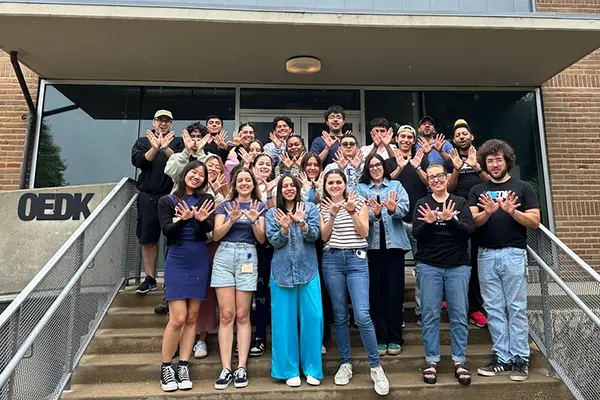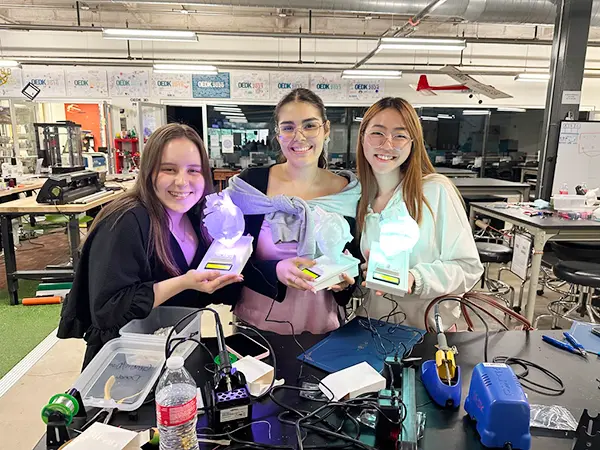Students from the Latin American University of Science and Technology, located in San Jose, Costa Rica, took part in a transformative weeklong program last summer at Rice University’s Oshman Engineering Design Kitchen, an expansive academic makerspace designed to foster creativity, technical skills and interdisciplinary collaboration.
As part of OEDK’s International Summer Experience in Engineering Design program, this immersive workshop introduced students to cutting-edge prototyping tools and real-world engineering challenges, providing a unique opportunity to explore the intersection of creativity and technology.
For some of the 19 student participants, this was their first exposure to prototyping tools and processes. Through hands-on training, they learned to use advanced makerspace equipment such as 3D printers, laser cutters, electronics kits and woodworking tools, gaining confidence in operating these technologies.
One of the core projects involved developing a 3D-printed model of a human heart, which was programmed to mimic a heartbeat using LED lights and controlled via an Arduino microcontroller. This project reinforced technical skills and encouraged students to think critically about biomedical applications and interactive design.
The program emphasized the iterative design process, allowing students to prototype, test and refine their ideas while incorporating feedback and troubleshooting challenges with available resources. By working through design iterations, participants developed an appreciation for the importance of persistence, adaptability and problem-solving in engineering.
Beyond the technical aspects, the interdisciplinary and international nature of the program broadened students’ perspectives. Many participants had never been to the United States, making this experience an exciting cultural and educational exchange. Immersing themselves in Rice’s academic environment, they had the opportunity to collaborate with peers, interact with experienced mentors and gain insight into the innovation-driven culture of American engineering education.
The program’s structure encouraged collaborative learning and teamwork, mirroring real-world engineering environments, where diverse teams must develop effective solutions. The exposure to different problem-solving approaches, communication styles and engineering methodologies helped students build essential skills for global collaboration — an increasingly vital competency in today’s interconnected world.
By the end of the program, students had:
- Developed essential prototyping skills using multiple fabrication technologies.
- Gained hands-on experience in programming and electronics through Arduino-based projects.
- Learned to navigate the iterative design process, refining their prototypes based on testing and feedback.
- Gained confidence in using advanced makerspace equipment to bring creative ideas to life.
- Engaged in a cross-cultural engineering experience, expanding their global outlook and professional network.
This experience at the OEDK empowered the students to become more adept, innovative and forward-thinking engineers, equipped with the technical skills and design mindset needed to tackle the challenges of the modern world.
The iSEED program provided practical engineering experience and broadened their horizons, reinforcing the power of international collaboration in shaping the future of engineering design. The OEDK is excited to announce that this program will continue again in 2026.
Risa B. Myers
Associate Teaching Professor
Department of Computer Science


